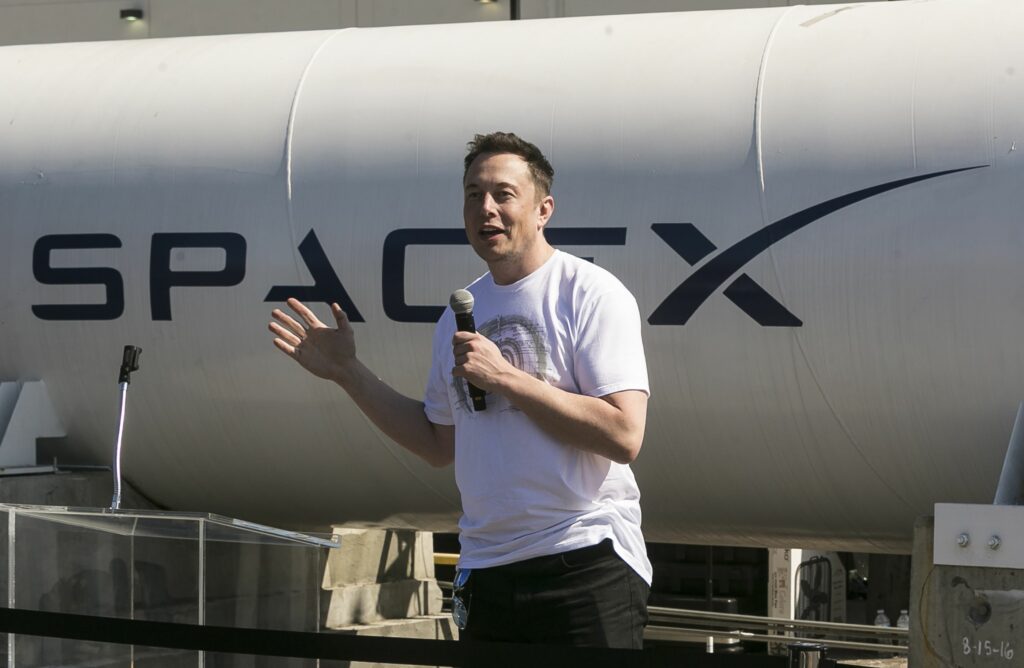INTRO
SpaceX’s Frontier in Exploration, Space exploration has always captivated the human imagination, pushing the boundaries of what we know and inspiring us to reach for the stars. In recent years, one company has been at the forefront of revolutionizing space technology and paving the way for humanity’s future beyond Earth:
SpaceX. Founded by visionary entrepreneur Elon Musk, SpaceX has made remarkable strides in the field of space exploration, transforming the way we approach missions, rocketry, and interplanetary travel. In this article, we will delve into SpaceX’s frontier in exploration and explore the impact of their groundbreaking initiatives.
1. Revolutionizing Space Technology:
SpaceX has redefined the space industry by introducing groundbreaking technologies and innovative approaches to space exploration. With a mission to make space more accessible and affordable, SpaceX has successfully reduced the cost of launching payloads into orbit by developing reusable rocket technology.
The Falcon 9 and Falcon Heavy rockets, designed and manufactured by SpaceX, have revolutionized the industry by landing and reusing their first stages, significantly lowering the cost of space missions. This breakthrough has opened up new possibilities for scientific research, satellite deployment, and commercial ventures.
2. The Dragon: Enabling Resupply and Human Spaceflight:
SpaceX’s Dragon spacecraft has played a pivotal role in resupplying the International Space Station (ISS). With multiple successful missions under its belt, Dragon has demonstrated the capability to transport cargo, scientific experiments, and essential supplies to the astronauts aboard the ISS. Furthermore, SpaceX has collaborated with NASA to develop the Crew Dragon spacecraft, which enables human spaceflight. This partnership has reinvigorated crewed missions from U.S. soil, reducing dependence on other nations for access to space.

3. Starship: The Future of Interplanetary Travel:
SpaceX’s ambitious Starship spacecraft represents the next frontier in interplanetary travel. Designed for long-duration missions, the fully reusable Starship aims to ferry humans and cargo to destinations such as the Moon, Mars, and beyond. With its massive payload capacity and advanced engineering, Starship has the potential to revolutionize our understanding of space exploration. SpaceX envisions using Starship to establish a sustainable human presence on Mars, making humanity a multiplanetary species and opening up new possibilities for scientific research, resource utilization, and colonization.
4. Collaboration and Partnerships:
SpaceX recognizes the importance of collaboration in advancing space exploration. The company has forged partnerships with NASA, other space agencies, and commercial entities to foster knowledge sharing, resource pooling, and joint mission efforts. Collaborations like the Commercial Crew Program with NASA have not only accelerated the development of crewed spaceflight capabilities but also fostered a new era of public-private partnerships in space exploration. These collaborations are instrumental in pushing the boundaries of what is possible and bringing us closer to unlocking the mysteries of the universe.
5. The Implications of SpaceX’s Frontier:
SpaceX’s relentless pursuit of exploration beyond Earth carries significant implications for the future of space travel and scientific discovery. By driving down the cost of space missions and developing advanced technologies, SpaceX has made space more accessible to governments, research institutions, and commercial entities. This increased accessibility fuels innovation and accelerates the pace of scientific breakthroughs. Moreover, SpaceX’s ambitious plans for interplanetary travel and colonization have the potential to shape the destiny of our species, ensuring our survival and expanding the boundaries of human civilization.

Here are a few key challenges they might encounter:
- Technological Complexity: Developing advanced spacecraft and technologies for interplanetary travel is an immensely complex undertaking. SpaceX’s Starship, for example, involves engineering challenges such as developing heat shield systems, life support systems, and long-duration space travel capabilities. Overcoming these technical hurdles requires extensive research, testing, and iteration.
- Safety and Reliability: Human spaceflight presents inherent risks, and ensuring the safety and reliability of spacecraft and launch systems is of paramount importance. SpaceX must continue to rigorously test and improve their systems to minimize risks and prevent accidents during crewed missions. Maintaining a track record of safety and reliability is crucial for gaining public trust and securing partnerships.
- Funding and Resources: Developing cutting-edge space technologies requires substantial financial resources. SpaceX must secure adequate funding to support research, development, manufacturing, and operational costs. While the company has achieved notable success in securing contracts and partnerships, competition for funding, budget constraints, and economic uncertainties can pose challenges.
- Regulatory and Legal Hurdles: Operating in the space industry involves navigating complex regulatory frameworks and international agreements. SpaceX must comply with various governmental regulations, obtain necessary licenses and permits, and adhere to international space law. The evolving nature of space regulations and the need for coordination among multiple nations can pose challenges and bureaucratic hurdles.
- Public Perception and Acceptance: As SpaceX pushes the boundaries of space exploration, public perception and acceptance play a crucial role. Balancing public excitement and interest in space exploration with concerns about safety, environmental impact, and ethical considerations can be a challenge. Communicating effectively with the public, addressing concerns, and fostering transparency are essential for maintaining support and public trust.
- Space Debris and Sustainability: The increasing number of satellites and spacecraft in orbit raises concerns about space debris and sustainability. SpaceX’s ambitious plans for satellite constellations, like Starlink, have sparked discussions about the potential impact on the space environment. Managing space debris and ensuring sustainable practices in space activities are important challenges that SpaceX and the broader space industry must address.
SpaceX’s ability to navigate these hurdles will shape the future of their exploration efforts and contribute to the overall advancement of space exploration as a whole.
CONCLUSION:
SpaceX’s frontier in exploration represents a paradigm shift in the way we approach space technology and travel. Through their relentless pursuit of innovation, SpaceX has redefined what is possible in space exploration, making it more affordable, accessible, and sustainable. From reusable rockets to ambitious plans for interplanetary travel, SpaceX is leading the charge in shaping humanity’s future beyond Earth’s confines. As we venture into the unknown, SpaceX’s pioneering spirit inspires us to dream big and reach for the stars. The journey to explore and colonize new worlds has only just begun, and SpaceX is at the forefront, guiding us on this thrilling odyssey of discovery.